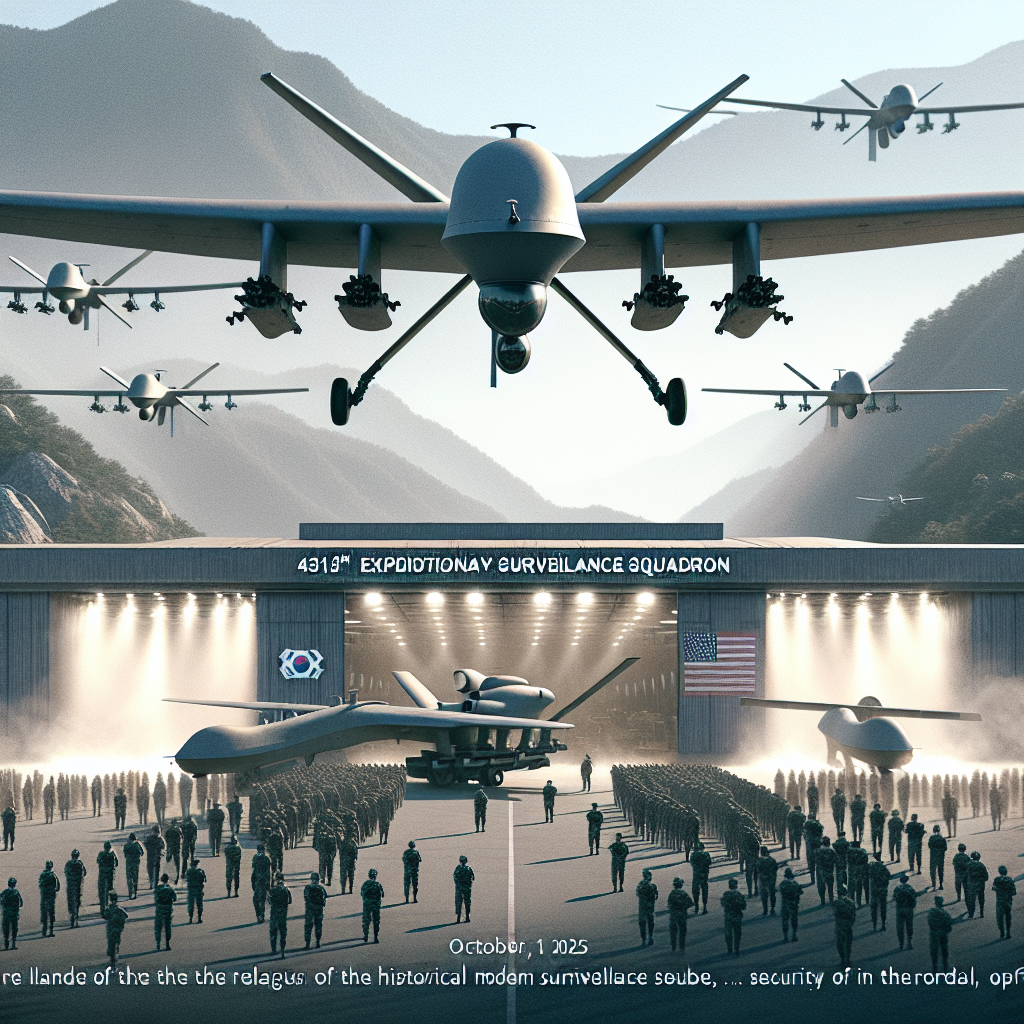On October 1, 2025, the US military officially relaunched the World War II-era 431st Expeditionary Surveillance Squadron equipped with MQ-9 “Reaper” unmanned drones at the mountainous air base in South Korea. This unit has become a permanent drone force for the US military stationed in South Korea, with operational coverage extending to the Taiwan Strait.
According to CNN, in July of this year, the US Air Force relocated 31 F-16 fighter jets and around 1,000 personnel from the mountainous air base to the Osan Air Base, forming a “super squadron” closer to North Korea. The US Air Force stated that this adjustment will continue until October next year to evaluate the maximization of combat power and enhance operational efficiency on the peninsula.
Following North Korean leader Kim Jong Un’s attendance at a military parade in China in early September, the US military has taken action to relaunch the “431st Squadron.” This designation can be traced back to World War II, established in Australia in 1943, responsible for escorting American bombers in the Pacific theater during the war, and finally disbanded in 1992.
According to US military data, the MQ-9 “Reaper” drone, equipped with a single-engine turboprop engine, although average in climbing and speed performance, excels in fuel efficiency and stability, allowing for long-duration high-altitude cruising. During combat missions, the “Reaper” drone can carry a variety of weapons, including “Hellfire” missiles and laser-guided bombs. Although the exact number of deployments in the mountainous region has not been disclosed by the US, as of January this year, the US Special Operations Command had a total of 50 MQ-9 drones.
With a range exceeding 1,600 miles, taking off from the mountain base, the drone can cover not only North Korea but also reach certain areas of China and the Taiwan Strait and East China Sea, approximately 800 miles away. More importantly, it can conduct aerial refueling, with virtually unlimited loitering time, significantly enhancing US military capabilities in the Indo-Pacific region.
The US Air Force statement indicated that deploying the MQ-9 is to support US-South Korean intelligence, surveillance, and reconnaissance missions throughout the entire Indo-Pacific region. The operational zone extends from the waters off the US West Coast to the western borders of India, and from Antarctica to the Arctic.
Commander of the 431st Squadron, Colonel Douglas Slater, stated, “Deploying the MQ-9 brings significant capabilities to this region. We are here to support missions, deepen cooperation, and demonstrate our commitment to security and stability in the Indo-Pacific.”
Permanently deploying the “Reaper” drone in the mountainous region demonstrates Washington’s commitment to South Korea and its other Pacific allies. Especially amidst external skepticism, this move highlights the US’s unwavering stance.
Production Team of “News Insight”

